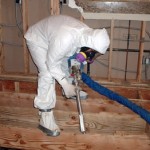
Regardless of whether you’re planning a long family trip or just using your car to get to work and run some errands, you should always check car’s condition before you drive it. Regular car checks and proper maintenance will not only ensure early detection of possible defects, but it will also prolong the life of your vehicle. And you do not need to be certified mechanics to know when your car is in need of service or repair. This home checks include simple stuff such as checking oil and fluid level, tire pressure, windows, gas tank, etc. Also, care of vehicle’s interior is important as it contributes to comfortable driving experience.
These daily checks will not take more than 15 minutes of your time, but will save you hours or even days of costly repairs. For example, tires are one of more important safety features of any vehicle. They not only support the weight of a vehicle, but also minimize the effect of road friction. So, it is very important to inspect tires on a daily basis for possible cracks, cuts or blisters and pressure. Tires should always be inflated to the level recommended by manufacturer to ensure easy maneuvering, reduce safety risks and obtain the most optimal fuel economy. Also, check windshield and windows for possible cracks and clean them for better visibility on the road. Pay special attention to the brakes. If you hear any screeching sound when you tap on a break pad, then you most likely need to replace them.
Also, engine oil level plays important part in the proper engine operation. It serves as a lubricant to all engine’s internal parts and helps it run smooth. And checking oil level is a simple task which does not require basically any knowledge of cars. It is enough to read your owner’s manual and follow manufacturer’s instructions. To get the correct reading, your car should be on level ground and engine should not be running. Pull out the dipstick, wipe it with a clean cloth, reinsert it, pull it out again and check the oil level according to the markings on the dipstick. Consult the manual to know which marking indicates what. This way you’ll know if you need to refill engine oil and if there may be a certain defect. For example, if there’s froth on the dipstick, then the engine oil may be mixed with engine coolant, in which case your vehicle may need a head gasket repair.
If this is the case you should visit a mechanic and have him evaluate the problem. But keep in mind that you have two choices. You can either have a mechanic take the engine apart and replace head gasket or you can put the seal into the radiator and see if that fixes the problem. Head gasket repair cost can reach over thousands of dollars, which is why it is important to detect any defect or leak on time. And you can achieve this with proper maintenance and regular checks.


